#dendera
Text
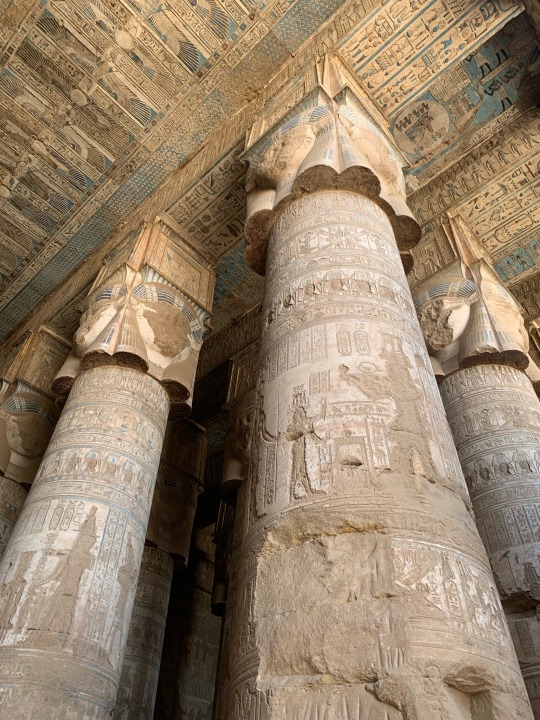
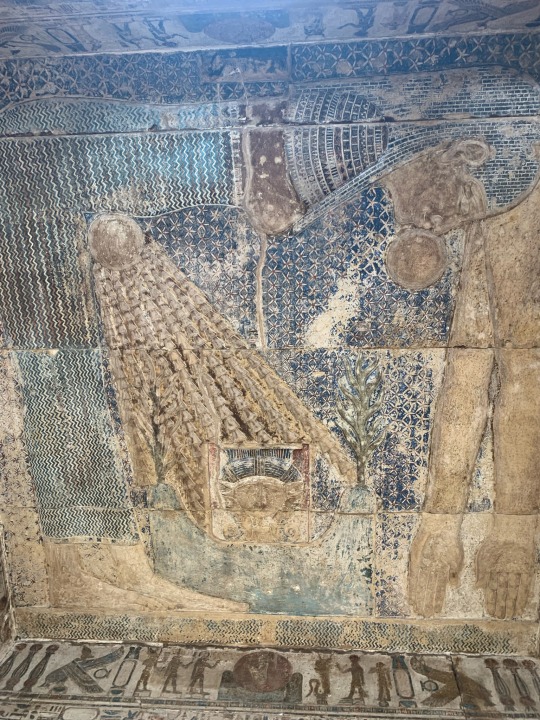


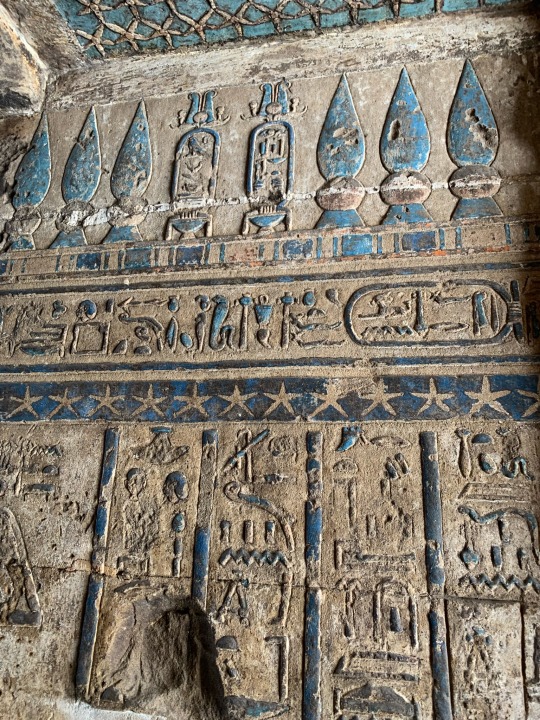



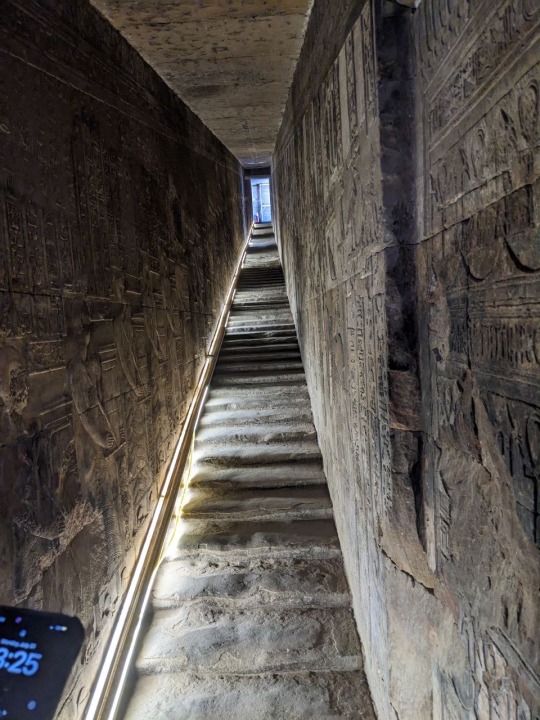

Scenery and imagery from the Hathor temple at Dendera, built in the Greco-Roman period
photos taken by me in August, 2023
Some parts of this temple, when I visited, were off limits. However it was very hard to distinguish what was and wasn’t off limits, so my companion and I wandered everywhere. We also bought passes to the different hidden chambers of the temple; well worth the price in my opinion. You descend or ascend cramped, steep stairs to get to seemingly secret and certainly hidden tunnels filled with vivid imagery of the Gods and worship. Unfortunately, the Dendera calendar filled with zodiacs, has been stolen and replaced with a black cast of what it once was. The original now rests in a museum in Europe.
#ancient egypt#dendera#Hathor#egyptian mythology#egyptian hieroglyphs#ancient history#egyptian gods#egyptian art#egyptology#ancient art#hieroglyphs#egypt
1K notes
·
View notes
Text

Hypostyle hall of the Temple of Hathor at Dendera
994 notes
·
View notes
Text
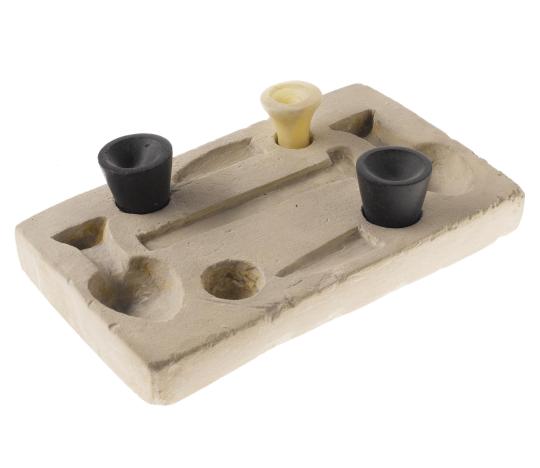
~ Basalt cups from a set of implements for the Ceremony of Opening the Mouth.
Period: 6th Dynasty
Place of origin: Tomb of Adu I, Dendera, Upper Egypt
Medium: Basalt
#ancient#ancient egypt#Egypt#Egyptian#basalt cups#ceremony of opening the mouth#tomb of adi i#dendera#6th Dynasty#history#archeology#museum
516 notes
·
View notes
Text
Hey can y'all fucking stop with "no no it's not restoration works, the temple of Dendera just didn't have soot because the roof was put on last!!!"
Like for one thing what do we think happens after a temple is completed? That they slapped the roof on and then just what, fucked off to never set foot in it again until millennia later we dug it up from the sand? No, the Egyptians used the temple. Which required burning oil lamps, which eventually did leave soot even if they did have relatively clean-burning wicks. Ancient buildings and tombs were also sometimes repurposed as shelters in later periods, and those people also used flame as their light source.
Second of all we have photos of the restoration process. Actual before/after photos. Unequivocal photos that show the fucking soot.

We all know that using an easily refutable "argument" such as "they just put the roof on last!" plays into ancient aliens conspiracists' hands, right? We can all see how that will move to "ah, but if the temple was used, as it was, then why is there still no soot? Egyptians had electricity is the only answer!", right?
Just. Just stop. Stop denying an actual, documented thing that started in 1997 in favour of a half-truth that we're not even sure about because the temple builders didn't leave us any direct evidence of when they put the roof on exactly.
#egyptology#ancient egypt#dendera#yes it's likely that they put on last but this doesn't make a difference because there very much was soot on it prior to 1997!
641 notes
·
View notes
Text
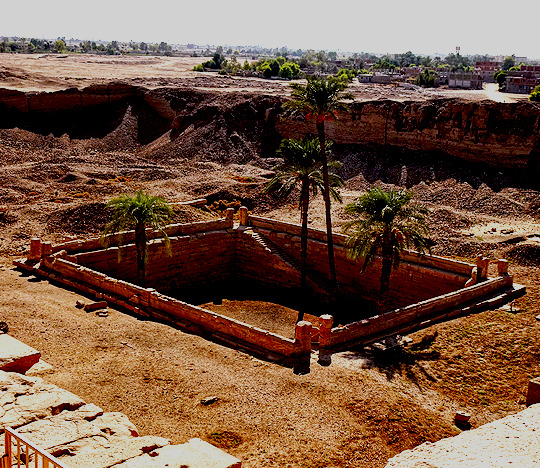
Sacred Lake Hathor Temple Dendera
The sacred lake was a pool of water next to the temple. It was where priests purified themselves before performing rituals in the temple. [source]
#egypt#ancient egypt#egyptology#archaeology#historyedit#mine#my edit#documentary#dendera#sacred lake#hathor#temple
263 notes
·
View notes
Text
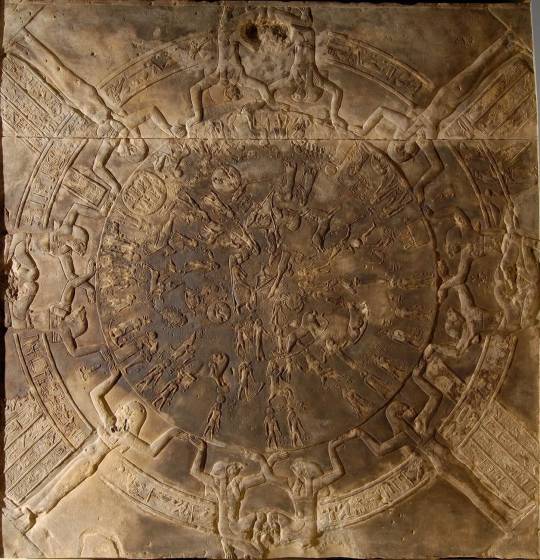
The Dendera Zodiac
The zodiac is a widely known Egyptian bas-relief from the ceiling of the pronaos of a chapel dedicated to Osiris in the Hathor temple at Dendera. It contains images of Taurus and the Libra.
The chapel was begun in the late Ptolemaic period; its pronaos was added by the emperor Tiberius. This led Jean-François Champollion to date the relief correctly to the Graeco-Roman Period. However, most of his contemporaries believed it to be of the New Kingdom.
The relief, which John H. Rogers characterized as “the only complete map that we have of an ancient sky”, has been conjectured to represent the basis on which later astronomy systems were based. It is now on display at the Louvre, Paris. D 38 ; E 13482 ; CM 464
Read more
123 notes
·
View notes
Text
Denderah - Carvings with Cleopatra VII and her son Ptolemy XV Caesar

The colossal carving of Cleopatra VII Philopator (51-30 BC) and her son Ptolemy XV Caesarion (44-30 BC) before the gods, on the south exterior wall of Temple of Dendera. The large goddess on the right, the first of a procession of deities not included in the photograph, is Hathor. The present temple at Dendera is essentially a Ptolemaic structure, with the exception of the mammisi (or 'birth house') erected by Nectanebo I (380-362 BC), which represents the earliest surviving structure of the complex, and later Roman additions, such as the first hypostyle hall, built by the Emperor Tiberius (42 BC-AD 37). There is evidence, though, that the temple was built on the site of a previous one, dating at least from the early New Kingdom (around 1500 BC) with suggestions of structures being present in the area at the time of Pepy I (2321-2287 BC). The temple, one of the best preserved in Egypt, is dedicated to Hathor. The goddess is usually represented as a cow, often with the solar disc between the horns, in human form with, similarly, the solar disc between cow horns, such as in this case, or as a woman with cow’s ears. Her name means ‘house of Horus’ and, as the living king was identified with Horus, Hathor was considered the divine mother of the pharaoh, who had ‘son of Hathor’ as one of his royal titles. It is then certainly not a coincidence that Cleopatra decided to have this colossal scene carved onto a wall of the temple of Hathor.
#cleopatra#caesarion#cleopatra vii#ptolemy xv caesar#dendera#dendera temple#ancient history#history#archeology#ancient art#art#ptolemaic dynasty#ptolemaic egypt#ptolemies#ancient egypt#egypt#carvings#hathor#horus#gods#egyptian gods
16 notes
·
View notes
Text
Archaeologists in southern Egypt have unearthed a miniature sphinx statue with a unique feature - a smiling face with two dimples!
49 notes
·
View notes
Photo

Hypostyle Hall of Hathor Dendera Temple, Egypt
124 notes
·
View notes
Text
[ House of the Sun • UPDATES - 14th February 2024 ]
Hello and happy Valentine's Day everyone! Milky here with an important update for the project!
While working on the next character sheets and comics, I decided to involve my dear followers on Instagram in a funny challenge called the "DENDERA ZODIAC CHALLENGE" where you decide what deity can represent each zodiac sign we can actually see at the Dendera Temple.
Here is the Instagram story I made for more context:
Polls have officially started today, and if you'd like to join us, come follow me on Instagram or send me an ask here on Tumblr with your ideas!
Here's the link to my IG profile, just in case:
I'll make sure to include everyone who participates the challenge and tag them accordingly ♥️
And this is all for today, if you have questions, you can ask me anytime! Thanks for your kind attention 🙌🏼
#house of the sun#hos updates#egyptian mythology#egyptian gods#egyptology#dendera#dendera temple#zodiac
4 notes
·
View notes
Link
But I want to know who’s on the stela they found!
19 notes
·
View notes
Text
Kind of an odd looking sphinx. Roman, though, so it's most likely a portrait.
7 notes
·
View notes
Text

Bat became the emblem on a sistrum, related to Hathor, which appears on the top of her columns of her main temple of Dendera.
269 notes
·
View notes
Photo


Featuring @dapperclassic, wearing our Dendera Zodiac pocket square.
As the weather gets cooler, we are getting more excited for Fall/Winter fabrics, like this Prince of Wales grey jacket, knitted polo and cream trousers.
Swipe through to check out the pocket square in greater detail.
https://www.kentwang.com/dendera-zodiac.html
20 notes
·
View notes
Photo


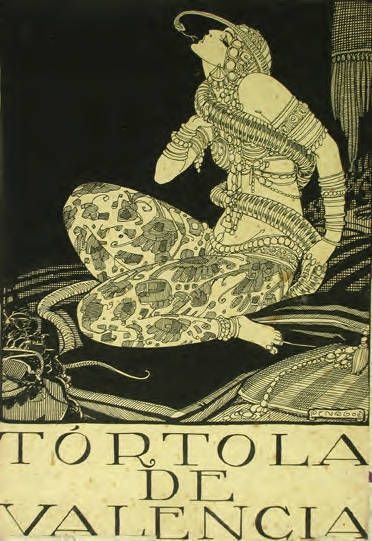
4 notes
·
View notes
Photo

“The “helicopter hieroglyphs” is a name given to part of an Egyptian hieroglyph carving from the Temple of Seti I at Abydos. Some have interpreted the hieroglyphs as an out-of-place artifact depicting a helicopter (above the nine short vertical bars) as well as other examples of modern technology.
The "helicopter" image is the result of carved stone being re-used over time. The initial carving was made during the reign of Seti I and translates to "He who repulses the nine [enemies of Egypt]". This carving was later filled in with plaster and re-carved during the reign of Ramesses II with the title "He who protects Egypt and overthrows the foreign countries". Over time, the plaster has eroded away, leaving both inscriptions partially visible and creating a palimpsest-like effect of overlapping hieroglyphs.” [source]

“The Dendera light is a motif in the Hathor temple at Dendera in Egypt. It depicts the Egyptian creation myth, and the text surrounding the pieces confirm this. The motif became famous when the History Channel claimed it depicts an ancient light bulb, something that the text around the motif disproves.
The temple contains several reliefs depicting Horus, in the form of a snake, emerging from a lotus flower which is usually attached to the bow of a barge. The so-called dendera light is a variation of this motif, showing Horus in an oval container called hn, which might represent the womb of Nut.” [source]
#egypt#ancient egypt#egyptology#archaeology#historyedit#mine#my edit#abydos#fake history#debunked#dendera
157 notes
·
View notes